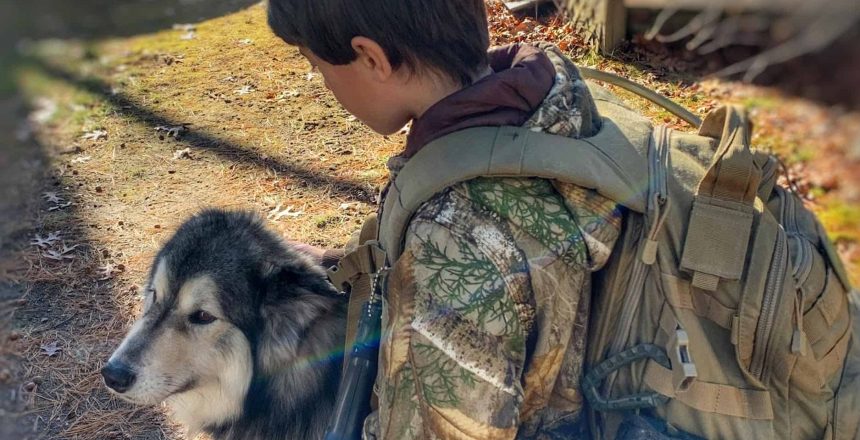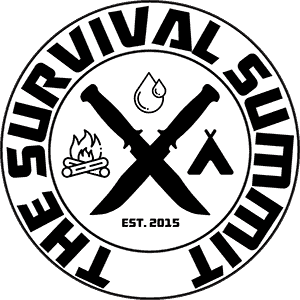Survival Summit Essential Gear List

Survival Summit Essential Gear List (Updated June 1st, 2022)
Initial Thoughts
Every person has basic needs for survival, and everyone has different skill sets. No matter what gear you choose to carry, be sure you’re learning how to use it in the field, and that you’re training as often as possible. A lot of things that work for some may not work for you based on your skill or comfort levels.
Learning and practicing skillsets should always be a top priority. Getting to know your gear so that it is an extension of yourself is vital. There is nothing worse than getting into a bad situation and only then realizing your gear is trash.
The more skill you have, the less gear you may need. The more in shape you are, the more gear you can carry, and visa-versa. Do not get trapped in some of the prepper debates about why this or that is wrong, or that there is only one way. Only by testing your gear as well as yourself in the field will you truly know what works.
This list is a baseline to meet your needs in a variety of situations you may run into. We recommend carrying a baseline pack that you can easily get to with most of this gear, wherever you go. Looking for instructional videos to learn new skills that you can then practice in the field? Look no further: Survival Summit carries a wide range of training videos.
We have very few gear links as part of this blog as we’ve just started to add physical gear, so keep checking back on our website to see all of our newest gear.
Backpacks:
5.11 Rush 72 (great if you’re not trying to blend in, in a city)
5.11 Covrt 18 2.0 (New as of 2022)
Fire
Exotac Beeswax Candles (a few to choose from) Continued next page…
Fatwood (or other ready to go tinder)
Shelter
Helikon Poncho or MIL-TEC Poncho (2 can make a shelter)
100% Virgin Wool Blanket(s) and/or sleeping bags Snugpak SF Bivvy
Snugpak Ionosphere or Snugpak Scorpian Tent (optional)
Snugpak SF Sleep system (Winter / Cold weather areas)
Water
Pathfinder Single Wall Stainless Steel Bottle & Cup Set
Grayl GeoPress, and/or Saywer Micro Squeeze Cotton Shemagh
Camelbak bladder for your backpack (adds a lot of weight when full)
Food
Emergency Rations (Brands: Datrex, SOS)
Making Pemmican (YouTube Video)
Foraging books: https://theforagersguidetowildfoods.com/
First Aid
Quality IFAK (first aid kit and trauma, include Moleskin for blisters)
Trauma Shears (if they don’t come in your kit)
Navigation
Suunto Global Compass 1:25 scale
Local Topographical Maps mytopo.com 1:25 scale
Waterproof Notebook and Pencil
Garmin GPSMAP 64ST (rechargeable Lithium Battery is separate, but well worth it) Garmin makes many great handheld GPS units.
You should learn land navigation 100%, but the chance you’ll always have a 1:25 or 1:24 scaled topo map specific to where you might be at the time of a crisis is almost zero. Those are for pre- planned routes and set locations, and if you’re not always at home, you’ll need an alternate plan. There is nothing wrong with an actual GPS. Today’s technology is insanely lightweight and very easy to recharge with mini solar panels. But again, you still need to learn Land Navigation! Just don’t let yourself be boxed into one way of thinking. Most experts have decades of experience and don’t need to rely on as much gear as most people.
Signaling items
Nitecore Flashlight (headlamp or handheld) Newer models can recharge via cable
Fenix, Surefire, and Streamlight are also good brands.
Rechargeable Nitecore batteries (recharge via mini Solar Charger 25000 MAH)
Flashlights: Old school thinking says only AA or AAA batteries because they’re abundant. Mini solar panels and today’s lithium batteries are far superior, and the newest batteries charge without an actual charger, by plugging right into the battery, or flashlight itself) Some newer Nitecore flashlights on super low settings can run for 350 hours at 5000 MAH.
Inmarsat Isatphone2 Satellite Phone (free phone with specific plans) Today’s monthly pricing for around 60-100 minutes a month is comparable to cell phone plans. Why not have an emergency device for those times where you have zero cell phone signal? You can even sign up for search and rescue insurance for only $30/month. Most people go for Iridium Sat. phones, but it’s much more expensive, and likely unnecessary for most people.
Tools
Small Solar Charger 25000 MAH (recharges GPS, Flashlight, Cell phone, Sat. phone)
Mora Carbon Garberg, Mora Bushcraft, or favorite knife
Silky Saw (many to choose from)
Gear repair Kit with sewing needle
Hults Bruk Hatchet (Mostly needed for Winter)
Your firearm, holster, and mag carriers of choice Escape and Evasion Tools (spread around on your person)
Warrior Poet Rifle Sling (if you’re carrying a long weapon)
Supplemental items
Wool Socks (a couple pairs) and an extra t-shirt Hygiene Kit
Insect repellent
Any required medication
Weather appropriate clothing and gear
Winter and other supplemental gear
You’re not going to fit all of your gear in one pack depending on the time of year and supplement gear you may need. Some people pull sleds if on foot, or if traveling in a vehicle, have different supplemental kits in different packs.
Fitness (often overlooked)
Whether you pack super light or heavy; your fitness level matters. If you can’t walk a few miles without a pack, imagine how you’ll do with a pack on. There are many fitness programs out there to help get you in shape.
Try to walk and/or hike as often as possible, first without gear, and then eventually start to add more weight. You can do basic exercises such as air squats in your home to build up your leg strength as well. We will be writing a “Survival Fitness” blog at some point in the near future.
New Film
Ultimate Bug-in and Home Defense, Starring EJ “Skullcrusher” Snyder. Get on the mailing list to be notified when this new film launches.
Download the new PDF version of this gear list HERE.
